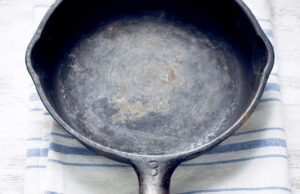As an Amazon Associate, I earn from qualifying purchases at no extra cost to you.
How to Clean Kenmore Dishwasher Filter Easily (Expert Tips)
Sometimes, I open my dishwasher and notice dishes still have tiny crumbs stuck. It’s frustrating, right? Often, the filter is just clogged and needs a simple clean. I used to ignore it, but now I see the difference when I clean it regularly. In this article, I’ll show you exactly how to clean Kenmore dishwasher filter without stress.
First, turn off your dishwasher and remove the bottom rack. Take out the filter carefully. Rinse it under warm water to remove loose debris. Use a soft brush to scrub away stuck-on bits. Soak the filter in warm soapy water if needed. Rinse thoroughly and check for any hidden grime. Reinstall the filter correctly. Run a short cycle to ensure everything works perfectly.
Understanding Your Kenmore Dishwasher Filter
The Kenmore dishwasher filter is a small, often overlooked part that keeps your dishwasher running smoothly. Many people don’t realize it catches tiny food particles. Over time, these particles can block the filter, making your dishwasher less efficient. I remember a time I ignored it for months, and suddenly dishes weren’t getting clean.
It’s easy to locate the filter. Usually, it sits at the bottom of the dishwasher under the lower rack. Removing the bottom rack makes access simple. Some filters twist out, while others lift straight up. You can tell it’s dirty when water pools or food bits stay on dishes.
Regular cleaning prevents bad odors and keeps your dishwasher working longer. Think of it as giving your appliance a small, gentle spa treatment. Even a quick rinse every month helps. Small crumbs can seem harmless, but they add up fast.
Many people ask how often they should clean it. Honestly, once a month works for most homes. If your household cooks a lot, maybe every two weeks is better. Keeping track is simple with a small note on the fridge.
- Filter traps tiny food particles
- Located under bottom rack
- Twist or lift to remove
- Clean monthly or biweekly for heavy use
Preparing to Remove the Filter
Before touching the filter, safety first. Make sure the dishwasher is off and unplugged if possible. Sometimes, I forget this step, and it feels scary when water leaks unexpectedly. Removing the bottom rack first makes everything easier. I usually slide it out gently and set it aside.
Gather supplies before starting. You’ll need a soft brush, warm water, and mild soap. Some people use an old toothbrush for stubborn debris. I like to keep all tools in a small caddy nearby. This keeps the process stress-free and quick.
Check the manual if you’re unsure about the type of filter. Kenmore has slightly different models, so a quick glance prevents mistakes. Some filters have multiple pieces; others are one unit. Knowing this helps avoid unnecessary force that could break parts.
Finally, prepare a clean towel or dish to place the filter on. This avoids dropping it on the floor or losing screws. I’ve done that once, and it was a tiny disaster. Keeping everything organized keeps it smooth.
- Turn off dishwasher and unplug
- Remove bottom rack
- Gather soft brush, soap, warm water
- Place filter on clean towel
Cleaning the Filter Thoroughly
Start by rinsing the filter under warm running water. Tiny crumbs often come off instantly. I like to hold it at an angle so water reaches all corners. If there’s stuck-on gunk, don’t panic.
Use a soft brush or toothbrush to scrub gently. Focus on the mesh and corners where food hides. I remember finding bits of rice that had been there for weeks. Gentle scrubbing works better than harsh scrubbing to avoid damage.
Soak the filter in warm, soapy water for 10–15 minutes if needed. This helps loosen grease or stubborn debris. Sometimes, I even add a teaspoon of vinegar to help remove odors. After soaking, rinse thoroughly to remove soap.
Check every part carefully. Tiny holes can hide food particles. Even a small crumb can affect cleaning performance. Once fully rinsed, let it air dry or pat with a towel before reinstalling. It’s a satisfying little win.
- Rinse under warm water
- Scrub with soft brush
- Soak in warm, soapy water if needed
- Rinse thoroughly and dry
Reinstalling the Filter Correctly
Place the filter back into the dishwasher carefully. Most Kenmore filters twist or snap into place. I always double-check alignment; a misaligned filter can cause leaks.
Make sure all parts fit snugly. Some filters have a top and bottom piece. If both aren’t secured, the filter might not work properly. I learned this the hard way when water pooled at the bottom.
Replace the bottom rack carefully. Sliding it back without disturbing the filter is important. Sometimes, I slightly lift the rack to ensure it doesn’t press on the filter incorrectly.
Run a short rinse cycle to test. You’ll notice dishes come out cleaner and water flows better. It’s almost instant gratification. I always smile seeing the difference.
- Align filter correctly
- Secure all parts
- Replace bottom rack
- Run short rinse cycle
Maintaining Your Dishwasher Filter
Regular maintenance keeps your dishwasher efficient. Even if it looks clean, a monthly rinse helps. I mark my calendar to remember. Small effort prevents bigger problems later.
Avoid harsh chemicals; mild soap works fine. Many people think vinegar or baking soda is needed every time, but occasional use is enough. Consistency matters more than extremes.
Check the drain area too. Food bits can get stuck around the filter area. A quick wipe with a damp cloth keeps everything clean. I often discover forgotten crumbs that could have caused clogs.
Keep a small brush or old toothbrush nearby. A 2-minute wipe every week saves hours later. It’s like brushing your teeth, small daily care pays off.
- Rinse monthly
- Use mild soap only
- Wipe drain area
- Keep small brush handy
Troubleshooting Common Filter Issues
Sometimes, even after cleaning, dishes are not spotless. Check if the filter is installed correctly. Misalignment can reduce water flow. I’ve made this mistake several times, and it’s surprising how much difference it makes.
Clogs may happen if large food bits get past the filter. Ensure your dishwasher pre-rinse removes big chunks. Sometimes, small habits like scraping plates first save time later.
If you notice odor, soak the filter in vinegar solution occasionally. This helps remove lingering smells. I learned this trick after noticing a faint sour scent in my dishwasher. It works like magic.
Check for damage. A torn mesh or cracked filter can reduce efficiency. Replacement is better than forced cleaning. A new filter is cheaper than dealing with a dishwasher repair.
- Check alignment
- Pre-rinse dishes
- Soak in vinegar for odor
- Inspect for damage
Final Thoughts
Cleaning your Kenmore dishwasher filter is easier than it seems. A few simple tools, gentle care, and regular attention go a long way. Your dishwasher will run better, dishes will shine, and it saves you from frustrating clogs. Treat it like a small, simple routine, and you’ll barely notice the effort. Consistency is the key.
| Task | Tools Needed | Tips |
|---|---|---|
| Remove bottom rack | None | Slide gently to avoid scratches |
| Remove filter | Gloves optional | Twist or lift carefully |
| Rinse filter | Warm water | Hold at angle for thorough rinse |
| Scrub filter | Soft brush/toothbrush | Focus on mesh and corners |
| Soak filter | Warm soapy water | Add vinegar for odor if needed |
| Dry filter | Clean towel | Air dry or pat dry before reinstalling |
| Reinstall filter | None | Align correctly, secure all parts |
| Test cycle | None | Run short rinse to check performance |
Frequently Asked Questions (FAQs)
Is it necessary to clean the Kenmore dishwasher filter every month?
Yes, cleaning monthly is ideal for most households. Over time, food particles and grease accumulate, reducing efficiency. I noticed my dishes stayed dirty when I skipped a month. Regular cleaning prevents odors, clogs, and wear on the pump. If your family cooks a lot, every two weeks might be better. Think of it as routine maintenance, like oiling a car. It only takes a few minutes but prevents bigger problems.
Can I use harsh chemicals to clean the dishwasher filter?
It’s better to avoid harsh chemicals. Mild soap and warm water work perfectly. Strong chemicals may damage the filter or plastic parts. I tried bleach once, and it slightly discolored the mesh. Gentle scrubbing and occasional vinegar soaking are enough. Consistent cleaning beats extreme chemicals. It’s safer and keeps your dishwasher lasting longer.
Do I need special tools to clean the filter?
Not really. A soft brush or an old toothbrush works fine. I usually keep a small brush in a caddy nearby. Warm water and mild soap are all that’s needed. Gloves are optional but can help if you have sensitive skin. Keeping it simple makes the process quick and easy.
Is it safe to remove the filter while the dishwasher is full of water?
No, always remove the filter when the dishwasher is empty. Water may spill, causing mess or minor injuries. I learned this the hard way when I tried mid-cycle. Turn off power, remove racks, then handle the filter. Safety first makes everything smooth.
Can I run the dishwasher without the filter?
Technically yes, but it’s not recommended. Food particles can clog the pump or damage parts. I once ran it without a filter, and tiny debris blocked the spray arms. Always reinstall the filter before running a cycle. It protects your dishwasher and ensures dishes come out clean.
Do I need to dry the filter before reinstalling?
It’s not mandatory, but patting dry or air drying helps. Moisture doesn’t harm the dishwasher, but drying ensures no trapped food particles. I usually pat it with a towel; it only takes seconds. It’s a small step that makes handling easier.
Is there a sign that the filter is clogged?
Yes, slow draining, water pooling, or dirty dishes are common signs. I once ignored it, and rice stuck on every plate. Strange odors are also a clue. If you notice these, check and clean the filter immediately. It saves time and keeps dishes spotless.
Can vinegar help clean the filter effectively?
Absolutely, vinegar works well for odors or stubborn grease. I soak the filter in warm water with a splash of vinegar occasionally. It loosens debris and neutralizes smells. But regular soapy water cleaning is usually enough. Vinegar is a bonus for extra freshness.




